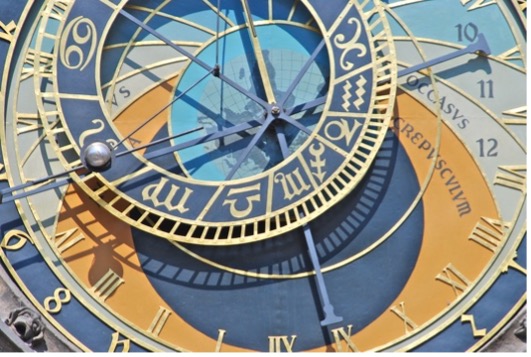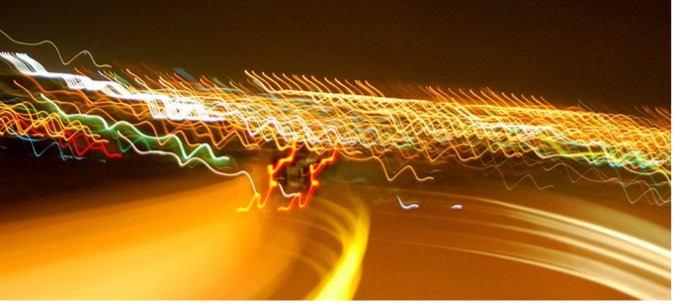This summer I went with a group of friends to a nightclub in Edinburgh. It was too busy to bother going to the bar, so we went straight into doing whatever passed among us for dancing. There were no breaks in the music, and each one had the same bass beat overlayed onto it, regardless of whether the song really needed it or not. Each song would gradually fade into the next, and almost no one noticed when it would shift. We stayed for what felt like hours, until I decided I’d rather be at home, and we left. As it turned out, we had been in the club for twenty minutes. But as someone who isn’t particularly social, who doesn’t like loud noises or bright lights or crowded rooms or pop songs, it was my personal nightmare.
Well, almost my personal nightmare. My real nightmare, as I imagine it to be in the screenplay I have written for a film called ‘No Love Lost’, is a club that I cannot leave. In that nightmare, I would go to a club out of some sense of obligation or a desire to prove myself or for any myriad number of reasons (none of which being that I wanted to be there) and become trapped in the nightclub forever. That fear will, of course, never be realized. But I decided that it could be a good premise for a film reflecting on personal peace, peace amongst friends and in social settings, and some of the tensions and barriers that can get in the way.

I am fascinated by the idea of time loops in storytelling, and what they can do with a particular narrative. Time loops almost always occur on a day where a character goes through the motions with some level of reluctance: for instance, Phil has to travel to rural Pennsylvania and give a dull news report in Groundhog Day, Niles in Palm Springs has to attend a wedding with the girlfriend he has fallen out of love with, and Nadia dies at her own birthday party in Russian Doll. In all instances, there is a sense of the characters becoming trapped within their own story.
That said, the message of these films is adjustable depending on the plot circumstances. We can learn to treasure the people around us, to look for small joys and beauties in our everyday lives, to understand the consequences of our actions, no matter how small; or we can just enjoy unraveling the mystery alongside the protagonist. There is an element of horror in many narrative time loops: in these stories, it often takes thousands of days, the equivalent of years or even decades, to escape the loop. Some time loop narratives play up this sense of existential horror: in the black comedy Happy Death Day, for example, a girl witnesses her own murder as well as that of her friend ad nauseum. In one of my favorite time loops, the season 2 finale of the TV series Twin Peaks, the protagonist finds the time loop is also a space loop after walking into room after identical room in an 11-minute sequence. He eventually meets his doppelganger, created by this alternate universe that he is stuck in, who he learns can leave the room and is impersonating him in the real world.

For the time loop in my own film, I wanted to address inner peace and how it relates to social interaction. The protagonist in my film, Anna, goes rather unwillingly to a club along with her much more sociable friend Stella. When she enters the club, she is quickly overwhelmed and tries to leave the room. When she opens the door, however, she finds herself once again entering the club. She seeks out Stella to no avail, and eventually resigns herself to remaining in the club forever. Anna forces herself to endure a situation which overwhelms her and causes her anxiety, because she cannot find a means of escape; and this clearly benefits no one, particularly not herself.
This behaviour, I have noticed, is common in the real world as well as in this fictional one. In society we constantly do things we do not want to. We drink black coffee even though we dislike it, we force ourselves to go out when we are not feeling well, we count our calories, we don’t go out in the sun in case we get wrinkles later in life, we keep slogging away at jobs that make us stressed. Inner peace, to my mind, is the knowledge that each individual decision will not determine whether we are considered cool, whether or not we have ‘succeeded’ in life, whether our friends like us, whether we will like ourselves more or hate ourselves less. In the best-case scenario, we contribute to our own inner sense of happiness and peace through positive self-care and proactive choices, prioritising things that increase our sense of wellbeing and interest in life. In the worst case, we force ourselves to relive the same bad experiences day in and day out, on a loop, for the rest of our lives.
What do you think?
- What does inner peace mean to you?
- Can peace be directed inwards, and if so – how?
- Do you do things in your everyday life that promote or thwart your inner peace?
- Do you ever find yourself stuff in a ‘time loop’ which you feel you cannot escape? What would it take to break that loop – and would you feel more ‘at peace’ if you did?
- In what kinds of social settings do you feel ‘at peace’? Do you find yourself in social settings which do not bring you peace? Is that always a bad thing?
- What is the relationship between inner peace, peace in social settings and mental health?
- Can individual peace contribute to peace in larger communities?
If you enjoyed this item in our museum…
You might also enjoy Pockets of Peace in Ukraine, Spring 2022: A Reflection, Journey: visualizing peace through gaming, Mindful Peace, and Inner Peace.
Arden Henley, December 2022